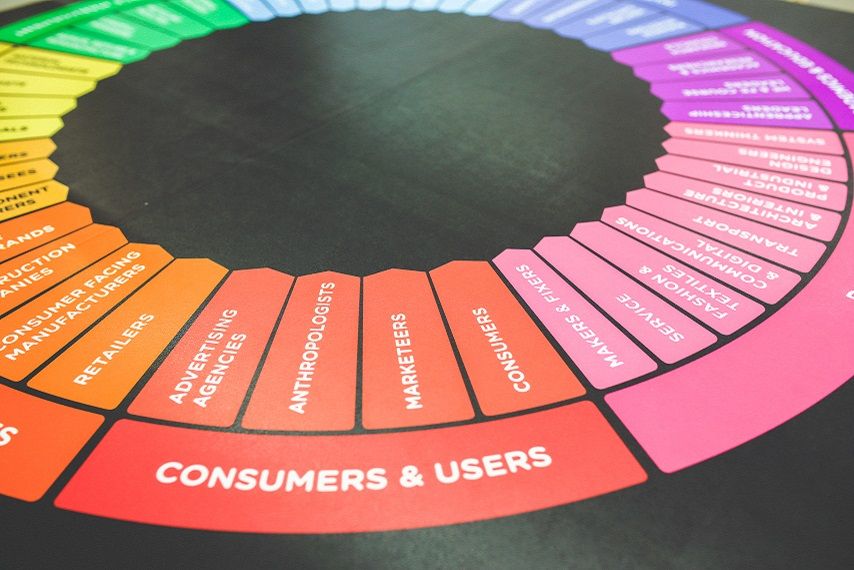The Rationalisation of Content

In a world full of information, it is much harder now to get the attention of your audience. The good news is, with the rise of interactive media, the audience you get could be much more responsive.
So, where does content play in this? Everywhere.
Marketers have always been creating content. Content Marketing raised from a need to become more strategic in sharing messages to create the right impression. It focuses on how organisations wish to bring their special knowledge and contributions to the community -saying it to their ideal audience in a way that captures their attention most. Obviously, this can be done in various media, over various channels.
Let's look at some thoughts around content marketing.
Consistent Basics and Integrated Platforms
Make important purchase information readily available and easily found.
According to research done by Brand New Media, 80% of purchasers buy after researching in an online environment. Not only does having fresh and accurate online content help educate customers to make informed buying decisions, it also helps to establish a good customer impression of the business/brand, giving it more credibility as a trusted source, which contributes to building brand loyalty.
This will also ensure you leverage benefits from connecting content to more information which will allow your customers to make quicker decisions and increase the effectiveness of call-to-actions, increasing ROI on your content.
Where? What? How?
Half the effectiveness of content is hinged on where it is shared. With the constant increase in where consumers can get their information, marketers are hard pressed to find the best places to make their content good marketing investments.
In an ideal world, brands would know their consumers inside out, and would always be in the channels that they use most. However, a brand's ability to do that is often limited by their budget for analytics and resources.
Keep asking questions like:
• Where do your customers get information?
• What is our customer's online behaviour?
• How do they interact within channels?
Only then can you truly understand how best to present content to them.
More or Less, Curated vs. Original
Does more content = better communication?
Smart marketers know how good content can be cut-to-tease, serialised, re-used, re-modified and re-packaged to give even more depth to a message. But are you putting everything and anything out there with the logic that more communication is better than no communication?
With computer algorithms taking over what writers can do, more and more words are flooding the Internet. Some brands, in an aim to generate more content, have even passed on the control of their content to their everyday users, artists and even kids, according to Digital Marketing Asia.
User generated content is often very effective in community building. However, marketers need to ensure a healthy balance of original expert content is around to showcase the brand while giving space to opinions and for support. Marketers now need to think even harder about what makes people stop and pay attention.
Stop and check: Are your target customers looking at your content? If not, why waste time on them? Does your content glorify the organisation and leaders rather than provide customers with information?
Games, Custom, Integrated and Real-Time Content
Mobile devices have given gamification wings. As much as we like to believe it draws attention to a brand, it might not. Just like it was in the past, think of how to build an online or offline relationship with your customers long-term. There are few instances where customers, like a hit-and-run brand experience.
While integrating online and offline content make for an amazing interactive campaign, analytics have allowed for real-time content delivery to be much more efficient. Landing specific content in line with a customer action or customer type can now be automated. The sky is the limit.
Content Fatigue is Very Real
As spoilt consumers, we are inundated by more data every day. How much can one actually absorb? As our attention span shortens and searching for information replaces knowledge retention, consumers will expect even more from on-demand content and may still react lukewarm to innovative campaigns. So, where is the line?
There really isn't a solution. Staying relevant has never been more important. As with life, we can only get better trying. However, one truth rings constantly. Everyone loves the neighbour who shares practical experience, but the nosy neighbour giving you cake every week always has an ulterior motive.
Here are three basic guidelines to keep in mind when building your Content Strategy:
1. Create a plan and stick to it -this means, not posting as and when you feel like, but have a planned delivery in each channel. Research shows that a plan not only helps you stay on track, but allows you to know what needs to change.
2. Think of how the content you want to produce fits into the message you wish to convey.
3. Always begin with the end in mind - Steven Covey.
Finally, we know the content will keep coming. In some ways, the more useable knowledge people have, the better we can make decisions. However, redundant information can confuse. As marketers, perhaps it is our duty to help clients rationalise their content efforts; ensuring the information is accurate, useful and well shared to their audience and the world at large. After all, in this digital age, what you put out there can last a long time.
Courses which may interest you
- Econsultancy: Fast Track Digital Marketing Training
- Econsultancy: Content Marketing for Web, Mobile & Social Media
- Blogging Essentials: Increasing Traffic through Engaging & Useful Content
About the writer
Lena is a content idealist and mindful marketer. Her passion for content takes her into all areas of research from technology to life and art. Her current portfolio includes being a freelance writer, consultant as well as Content Director at Retinel. Write to her at [email protected].







